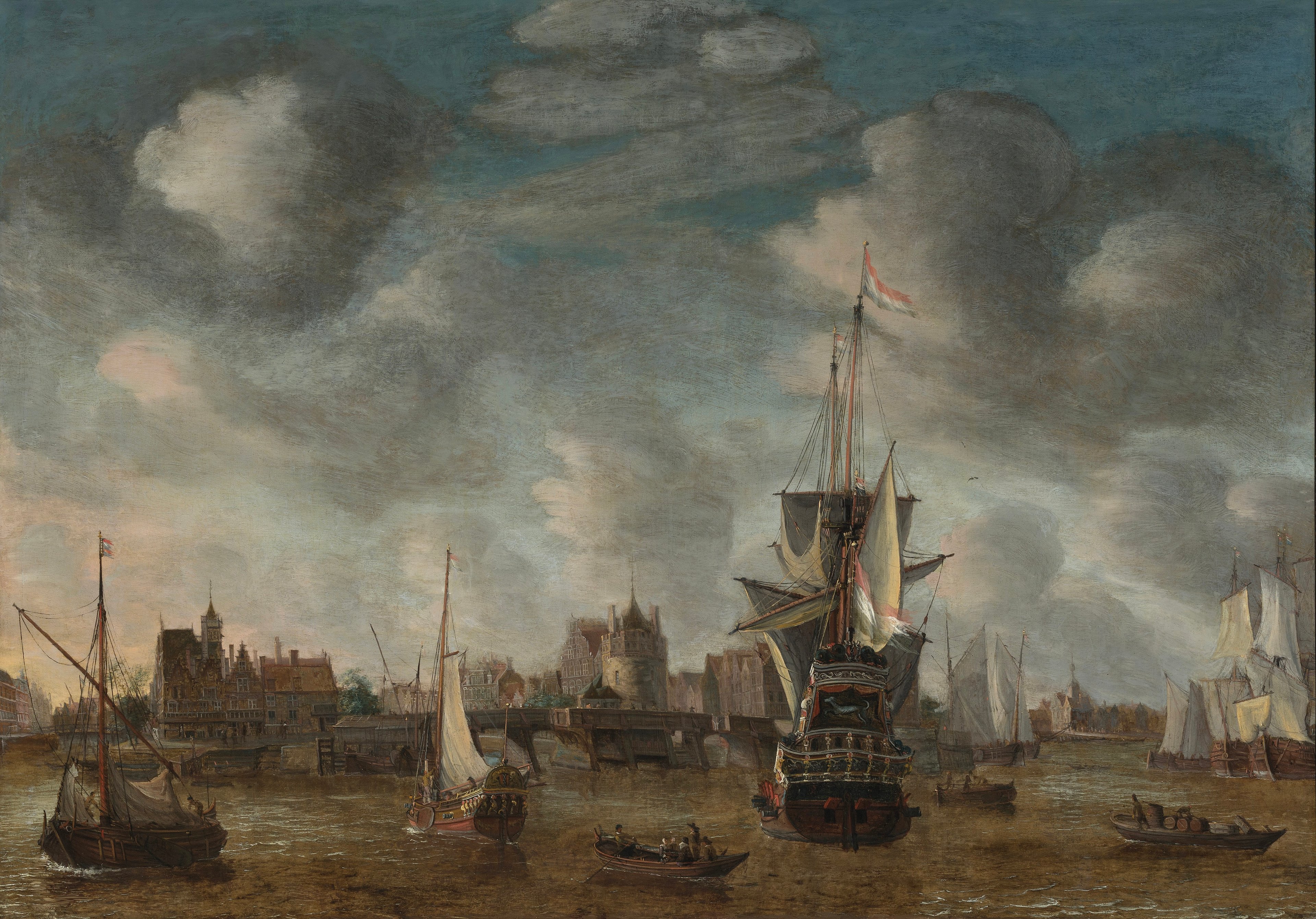
The Netherlands gained global significance in the 17th century through trade, colonies, and a strong fleet. Artists captured this maritime greatness in detailed maritime paintings.
Naval painting as a reflection of the times
In the course of the 17th century, the Dutch had every reason to feel they were the new masters of the seas. Previously, they had been able to hold their own against Spanish rule in the so-called “Eighty Years’ War,” albeit at a great sacrifice. A rather loose union of peripheral territories became a Protestant republic under the leadership of the House of Orange, a new nation that saw itself as God’s chosen people. It was only the Peace of Westphalia that brought it final recognition in 1648. The Dutch soon gained control over extensive parts of the world’s oceans: prosperous Amsterdam became the main centre of international trade, while Spanish power had long passed its zenith.
A major role in this expansion towards the sea was played by the Dutch merchant ships of the Vereenigde Ostindische Compagnie (VOC), a private association of Dutch merchants which was founded in 1602 and which had been promised wide-ranging monopolies by the state. As the largest company of its time, the VOC succeeded in establishing a colonial empire in what is now Indonesia and managed to gain access to a highly isolated Japan. With its frequently brutal methods, such as the slave trade, it was little different from its competitors from other countries.
Against this background, an independent form of marine art developed in the Netherlands, which celebrated military success at sea and documented in detail the diversity of the different types of ship. Moreover, the sea itself also became a central theme of art in an unprecedented form; this also included the risks associated with seafaring. The ships lying at anchor in the port of Amsterdam, the painter’s hometown, not only represent the global seafaring of the Dutch; they also symbolise the fortuitous end of hazardous journeys which was attributed to the grace of God.
Text: Ulrich Becker